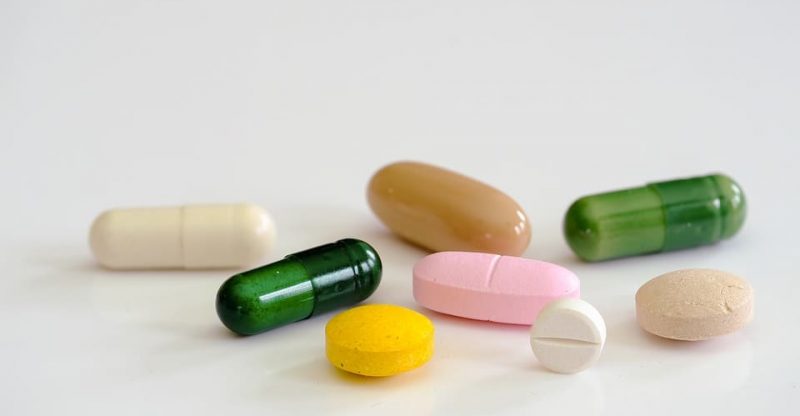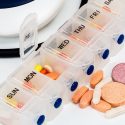What is Ferrous Gluconate (E579) in Food and Uses?

Production | Uses | Safety | FAQs
Ferrous gluconate or iron (II) gluconate, with iron in the +2 oxidation state, can be used as an iron supplement in food, a color additive for ripe olives, also for the treatment of iron deficiency anemia in medical uses. The European food additive number for it is E579.
How is Ferrous gluconate made?
It can be produced by the reaction of calcium gluconate, sulfuric acid, sodium carbonate and ferrous sulfate. And the following are the brief manufacturing process (1):
- Obtain a gluconic acid solution: sulfuric acid reacts with calcium gluconate.
- Obtain ferrous carbonate: the reaction between sodium carbonate and ferrous sulfate.
- Gluconic acid solution reacts with excess ferrous carbonate.
Ferrous gluconate can also be made from directly reacting gluconic acid (obtained from calcium gluconate) with iron powder.
Specification
| Other names |
|
| CAS number | 299-29-6 |
| Chemical formula | C12H22FeO14 · 2H2O |
| Molecular weight | 482.17 |
Structure

Image Source
There is one elemental iron in the molecule.
Properties
Appearance
A fine yellowish-gray or pale greenish-yellow powder or granular with a slight odour resembling that of burnt sugar. (2)
Stability
Not stable if exposed in air and the ferrous iron will be slowly oxidized to ferric.
Solubility
Soluble with slight heating in water, practically insoluble in ethanol. (3)
PH
Between 4 and 5.5 (10 % solution)
What’re the Uses of Ferrous gluconate?
Ferrous gluconate is often used as an iron source for food fortification and in the treatment of anemia (blood is shorts of healthy red blood cells caused by insufficient iron) in medical uses.
Let’s see the details.
Food
The uses of ferrous gluconate in food including as a nutrient supplement, such as in vitamins and minerals supplement, also in infant formula. It also can be used as a food coloring, making ripe olives black.
Pharmaceutical
Ferrous gluconate is used for treating or preventing iron deficiency anemia. (4)
Besides its pure form (powder or granular) sold as a bulk ingredient in the market, you can commonly find the tablet formulation of ferrous gluconate as an iron supplement with various dosages available in B2C market, for example, 324 mg, 325 mg, 300mg, 240 mg, 225 mg and so on.
Iron quantities in them are around 38mg, 38mg, 35mg, 26mg, 28mg, respectively. Iron quantities are calculated by [the quantity of ferrous gluconate] multiply [the molecular weight of iron]divide [the molecular weight of ferrous gluconate].
In tablet formulations, the following ingredients may be included:
- Microcrystalline Cellulose
- Methylcellulose
- Titanium Dioxide
- Silicon Dioxide
- Triacetin
- Magnesium Stearate
- Polydextrose
It can also be added in the production of multivitamin capsules and syrups.
Regarding how much should take for anemia or max dose per day, possible side effects and other information, please visit Drugs.
Another two iron(II) salts, ferrous sulfate and ferrous fumarate can also be used to treat anemia.
Is Ferrous gluconate Safe to Eat?
Yes, it has been approved safe by the U.S. Food and Drug Administration (FDA) and European Food Safety Authority (EFSA), as well as the Joint FAO/WHO Expert Committee on Food Additives (JECFA).
FDA
-
- Nutrient supplement: ferrous gluconate is generally recognized as safe (GRAS) when used as a nutrient supplement in food with no limitation other than current good manufacturing practice. Also, it may be used in infant formula. (5)
- Color additive: Ferrous gluconate may be safely used for the coloring of ripe olives. (6)
- Feed additive: It is also GRAS when used as nutrients and/or dietary supplements in animal drugs, feeds, and related products. (7)
EFSA
Ferrous gluconate (E579) is listed in Commission Regulation (EU) No 231/2012 as an authorised food additive and categorized in “ additives other than colours and sweeteners” (8).
Approved uses
It is only permitted to be used in canned or bottled fruit and vegetables and fruit and vegetables in vinegar, oil, or brine where olives are darkened by oxidation, with the maximum use levels 150 mg/l or mg/kg. (11)
Food Standards Australia New Zealand
It is an approved ingredient in Australia and New Zealand with the code number 579. (12)
JECFA
Function Class: food additives, color retention agent, nutrient supplement. (13)
Tolerable Intake: “PMTDI 0.8 mg/kg bw” for iron, set in 1987. (14)
Frequently asked questions
Is it vegan?
Yes, it is vegan as the raw material, calcium gluconate, sulfuric acid, sodium carbonate and ferrous sulfate are derived from the chemical synthesize, without the use of animal matter or products derived from animal origin. So it is suitable for vegetarians.
Is it the same with ferric gluconate?
No, different with ferric gluconate, the iron in which present +3 oxidation state, Fe3+.
Is it gluten free?
Yes, it is gluten free as it does not contain wheat, rye, barley, or crossbreeds of these grains, therefore can be used for people with celiac disease.
Conclusion
Now you may have a knowledge of the nutrient – Ferrous gluconate (E579), from the following aspects:
- Production process
- Uses
- Safety
- FAQs
What kinds of food labels have you found this ingredient in? Or if you have any questions or remarks about this additive, feel free to let me know in the comments.


So, the food additive ferrous gluconate is a mass produced synthetic…it’s not a natural mineral or compound like salt mined from the earth? And the compounds used in the process of synthesizing it that you described are synthetic chemicals as well?